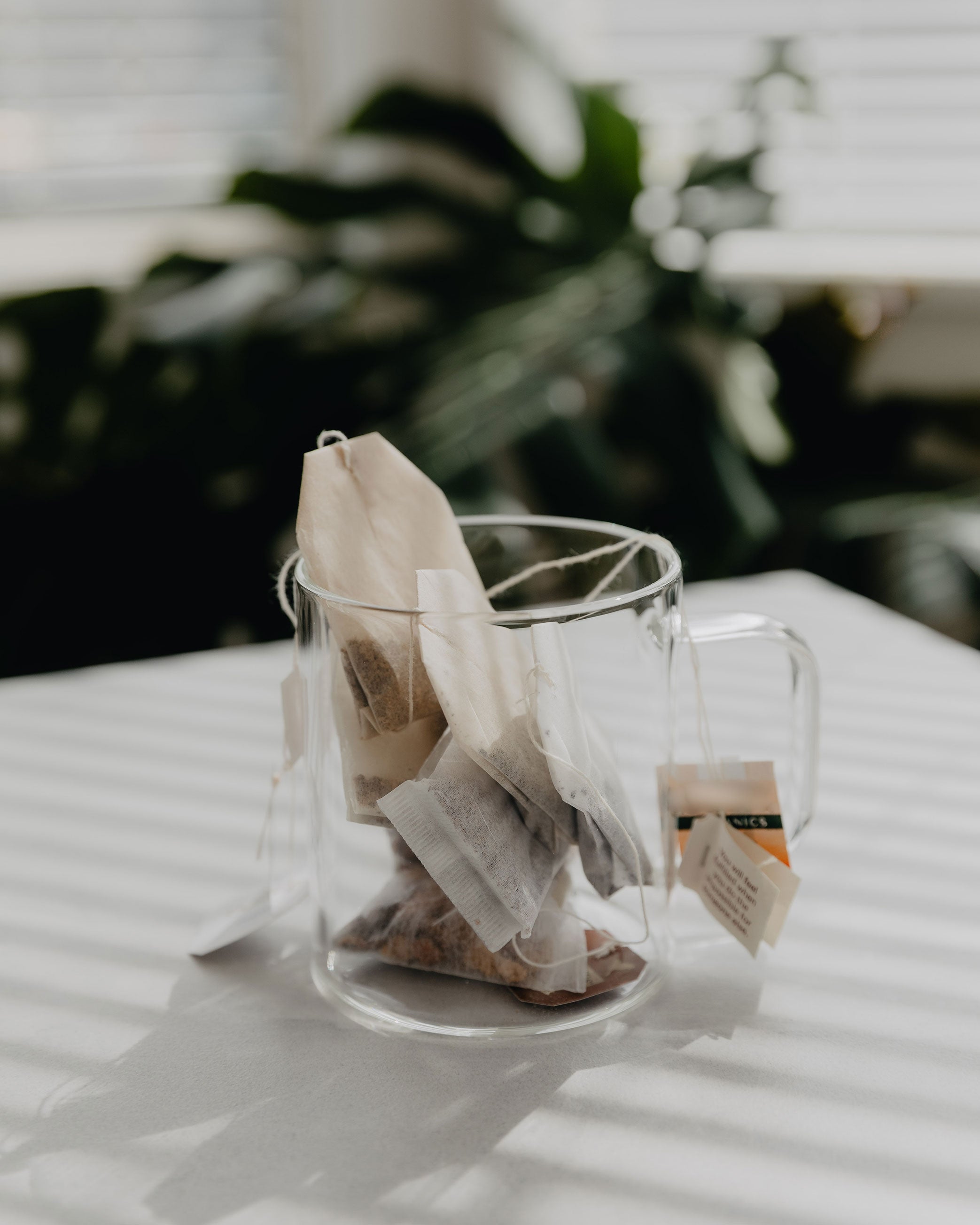What are tea bags made of?

It's estimated that 96% of tea drinkers choose the convenience of tea bags over loose leaf tea. And we get it. It's easy to dunk a bag of tea in a mug of hot water. However, this convenience can come at a cost for our health and the environment, leading us to the question: what are tea bags actually made of?
There is not one but a plethora of toxic ingredients found in most varieties of tea bags. These include nylon, plastic, bleached paper and string, not to mention metal staples and harmful types of glue used to seal the bags together.
Studies show that around 11 billion micro-plastics and 3.1 billion nano plastics are released in a single serving of tea when submerged in boiling water. Rather unsettling, don't you think?

How were tea bags invented?
In the early 1900s, Thomas Sullivan, a New York tea merchant (supposedly), accidentally invented tea bags when sending samples of his tea to customers in small hand-sewn fabric bags. The customers placed the whole bags into the pot, rather than emptying its contents as intended. This revelation allowed the tea drinker to make a single cup of tea rather than making an entire pot. You can imagine they were thrilled with the ease and simplicity of this brewing method. Sadly, this concept has since become 'polluted' with cheaper and more-toxic methods for convenience. Read on to discover our findings.

How are tea bags made?
There are three common types of tea bags, the first being paper. This might sound like a safe choice; however, most paper bags go through a bleaching process, which then goes on to be sealed with a thermoplastic glue such as polypropylene or plant-based polylactic acid. Each time you dip one of these bags in water, a small part of the bleach and pollutants from the glue imparts into your beverage. Even worse, many producers even add epichlorohydrin to increase the strength of paper tea bags, a carcinogenic compound you don't want to ingest.

The second type of tea bag are made purely from plastic. This kind is typically larger and holds more loose-leaf varieties of tea. Once submerged in hot water, they release billions of microplastics and nanoplastics into your drink. These, in turn, end up in our digestive systems. Plastic tea bags are also non-biodegradable, making them super wasteful for our planet.
The third style of tea bag is made from nylon, also known as pyramid tea bags. This variety has a more 'luxurious' feel and mimics the infusing style of a teapot due to the spacious and triangular structure of the bag. While nylon, as a fabric, is said to have high heat resistance, they are still susceptible to releasing toxic components in boiling water during the tea-making process.

Tea bags and the effect they have on our planet
After much research, it appears that most tea bags are not biodegradable, making them harmful to our environment. Many end up in our pipes, clogging our drains, and contribute to the mountain of single-use plastic that adds to our building landfill. In fact, many local councils in New Zealand advise not to include any in the compost collection bins at all.
The non-biodegradable nature, in our opinion, is a big concern for those who care about treading gently on this earth. Just take a moment to consider all the tea bags used around the planet daily. And once you think about the packaging, labels, staples, and strings, it all adds to an unnecessary mountain of waste that we could easily avoid!

With all this said, loose-leaf organic tea triumphs in every way, with a far superior taste and, importantly, no unnecessary waste and chemicals.
The excellent news is that knowledge is power and inspires us to make small, incremental changes for our planet. Not only does loose-leaf tea seem the obvious choice for our health, but brewing loose-leaf tea also enhances the ritual of tea drinking, encouraging us to slow down and take a moment to celebrate the joy of sipping tea.

If you're a single-cup drinker, a tea strainer comes in handy for countless cups of tea, or perhaps a 2-cup or 4-cup glass teapot is a lovely idea for sharing. We also love that loose-leaf tea offers a colourful variety and is more beautiful on the eye. Keen to try out something new? Click here to browse our delicious and colourful range of premium loose leaf organic teas.


